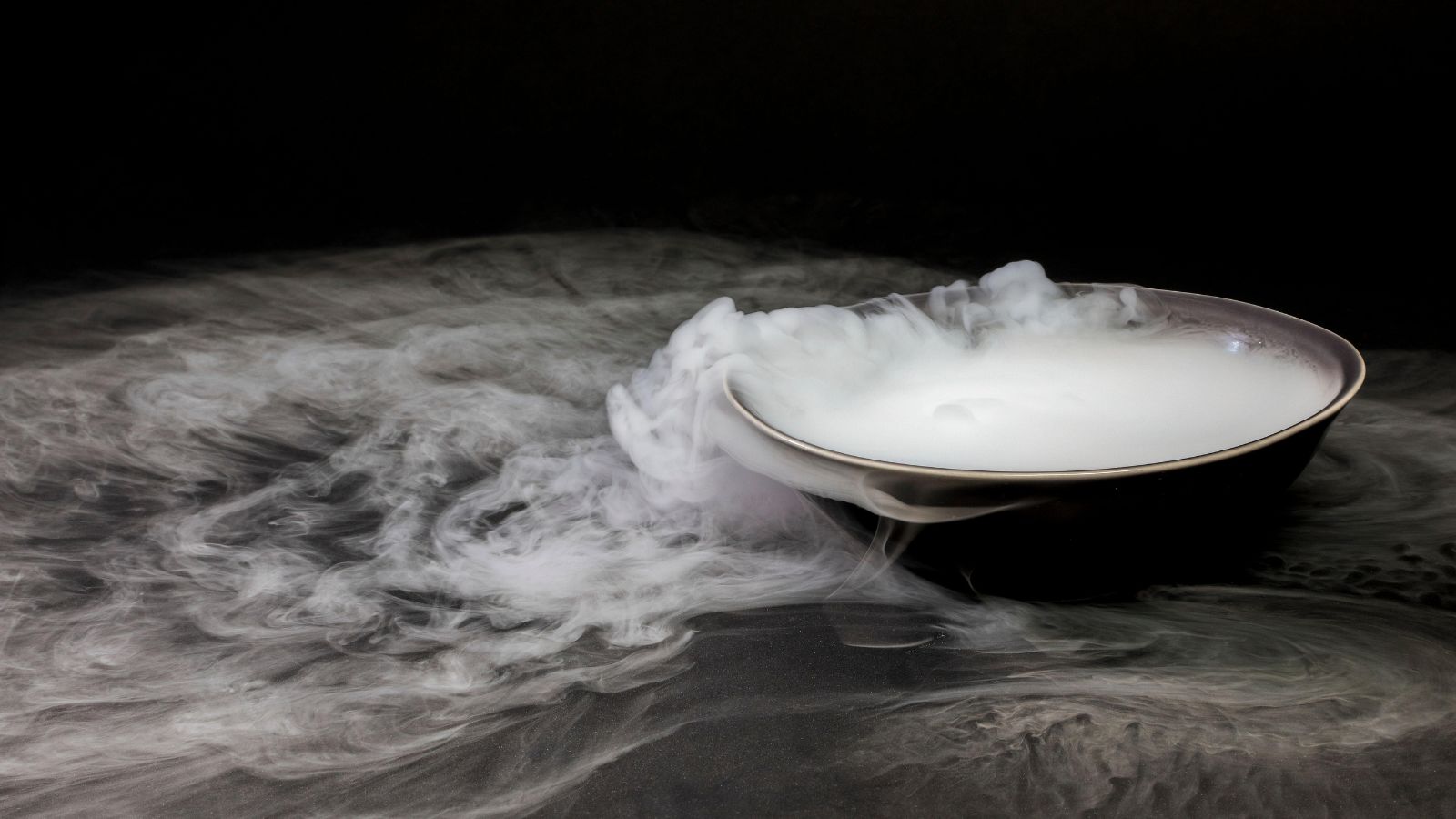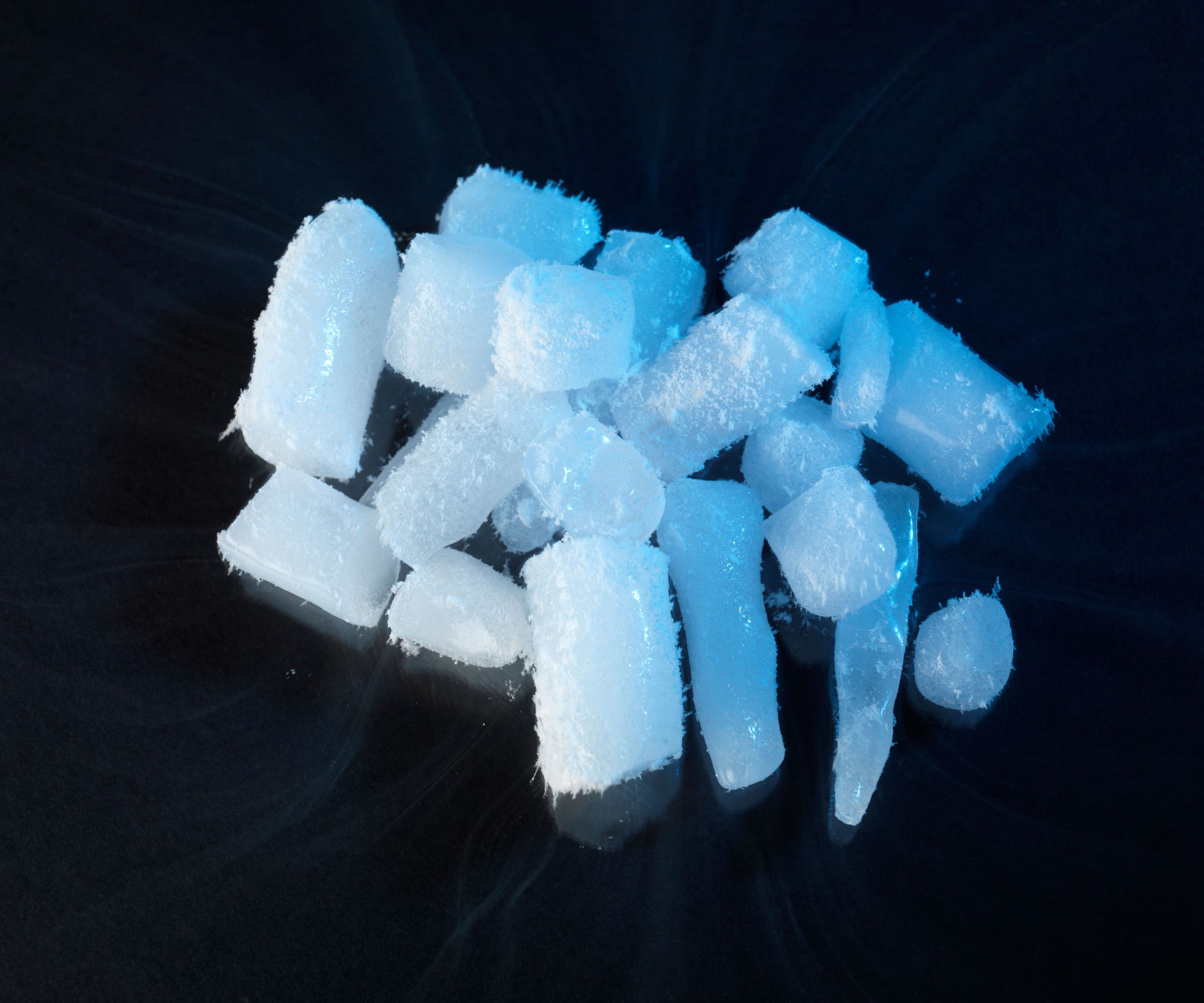Cleaning with dry ice – experts advise how and where they clean with this eco-friendly product
This revolutionary cleaning method is an eco-friendly and gentle way to clean anything from upholstery to mold


Cleaning with dry ice is an innovative, eco-friendly, and non-toxic method that can deep-clean items that are usually difficult to lift stains, odors, allergens, bacteria and even dust mites from, making it an easy way to freshen up your home.
Professionals use ice-blasting machines for cleaning to target hard-to-reach areas.
This method is a great way to clean a house fast, and leaves items clean and with no wetness or residue. Our experts advise the pros and cons of cleaning with dry ice and the precautions to be taken, as well as how and where they clean with it.
Cleaning your home with dry ice
Ice blasting using specialist equipment is the most common way of cleaning with dry ice. To do this, professionals put dry ice in a blasting machine and use the nozzle to gently blast the dry ice onto the targeted surface.
'Dry ice cleaning, also known as CO2 blasting, offers an environmentally friendly and highly effective way to clean various areas within your home,' says Hashi Mohamed, President at Ivy Cleans.
'In the kitchen, dry ice can be a game-changer for cleaning appliances like ovens, stovetops, and refrigerators, efficiently removing built-up grease and grime.
'In the bathroom, it's an ideal solution for tackling mold and soap scum on tiles, grout, and fixtures while sanitizing these surfaces.
'Dry ice cleaning can also breathe new life into your upholstered furniture and mattresses, eliminating stains and odors without resorting to harsh chemicals.
'Moreover, it's a safe method for cleaning delicate electronics such as computers and keyboards, preventing moisture damage.
'Dry ice is also well-suited for improving indoor air quality by cleaning HVAC systems, air ducts, and vents. In situations like fire and smoke restoration, dry ice can effectively remove soot and smoke residue from surfaces,' continues Hashi Mohamed.
Pros of dry ice cleaning

'There are many benefits of dry ice cleaning, from its non-toxic nature to its ability to reach into tight corners and crevices that traditional cleaning methods might miss,' comments Rich Mullins, cleaning expert at H2O plumbing.
Michael Gottron at Germicidal Maids agrees: 'Firstly, it is incredibly effective at removing stubborn stains and odors, making it ideal for pet owners or households with allergies. Dry ice cleaning also sanitizes surfaces, killing bacteria and viruses, and contributing to a healthier living environment.
'Secondly, it's an eco-friendly and sustainable cleaning method, as it uses CO2 pellets that evaporate upon contact, leaving no residue behind.' Since dry ice cleaning doesn't use water there is no water waste, unlike other cleaning methods such as steam cleaning, so not only is it environmentally friendly but it also protects delicate objects from water damage.
Muffetta Krueger at Muffetta's Domestic Assistants adds, 'Dry ice cleaning is chemical-free, making it safe for your family and the environment.
'Dry ice is non-abrasive, making it suitable for delicate surfaces like upholstery and mattresses.
Finally, dry ice cleaning is incredibly versatile, with a range of areas and issues, from mold to stains, that dry ice can be used to clean.

Muffetta Krueger is a cleaning expert and founder of Muffetta’s Domestic with over 16 years of operational management experience in the service industry. Muffetta’s Domestic Assistants provides housekeepers, house cleaners and maids, and is based in New York.
Cons of cleaning with dry ice
Dry ice requires specialist equipment handled by a professional, meaning it won't be the most affordable cleaning method.
Janille Mangat, founder of VMAP Cleaning Services warns, 'While dry ice cleaning has many benefits, it's essential to recognize that it may not suit all cleaning tasks. The safety precautions required may also limit its use for some individuals. Always follow safety guidelines and consult a professional for specific cleaning needs if unsure'.
Furthermore, dry ice must be stored at temperatures of -80° and below, so unless you are willing to invest in a storage method that reaches these temperatures, you cannot store your dry ice, meaning as soon as it is transported to you it must all be utilized. If you have hired a professional to clean with dry ice ensure you order only the amount of dry ice to be used as you need, otherwise, you will have paid for leftovers you can't use.
Precautions to take
Rich Mullins warns, 'When using dry ice for cleaning, you must adhere to safety precautions, as dry ice can be extremely cold. Among others, ensure you use appropriate protective gear and ventilate properly.'
The reason we don't recommend doing it yourself at home is because you risk ice burns and frostbite.
Professionals cleaning with dry ice should wear gloves and safety glasses to stay protected from the cold. Those handling dry ice should use protective, insulated latex, nitrile, or leather gloves, such as these BEETRO antifreeze gloves for dry ice handling, and these MELASA industrial-grade safety goggles from Amazon.
How to clean with dry ice
1. 'So to answer the ultimate question on how to clean, first, ensure your safety with gloves and eyewear due to the extreme cold of dry ice,' says Will Cotter, cleaning expert and the COO of FreshSpace.
2. 'Next, prepare the area by clearing to safeguard other items.'
3. Dry ice cleaning involves a specialized machine that propels dry ice pellets at high speeds. Dry ice pellets are loaded into the ice blaster, a piece of equipment with a pressurized hose connected to a body that holds the dry ice. The setting should be adjusted for the type of area you are cleaning.
4. The dry ice blaster needs to be used in a controlled manner and kept at an appropriate distance from the surface. Test a small, inconspicuous area first to ensure there is no damage.
5. Will Cotter continues, 'Gently sweep the blasting nozzle across the area you intend to clean to see dry ice pellets remove dirt and grime.
6. 'Afterward, let any remaining dry ice sublimate.' This should take a few minutes. The pellets will begin to sublimate upon impact, which is where the dry ice pellets expand, warming and converting into a harmless gas, creating kinetic energy that dislodges dirt and grime.
7. Once the dry ice has finished sublimating, wipe away any remaining residue with a clean cloth.
Upholstery cleaning

'One of the best places to use dry ice cleaning is on upholstered furniture like sofas and chairs,' suggests Rich Mullins. 'Over time, these pieces can accumulate dust, allergens, and even stubborn stains. It's particularly beneficial for allergy-prone households as it eliminates allergens and restores the freshness of your furniture.'
Muffetta Krueger adds, 'Dry ice can reach into crevices and corners that traditional cleaning methods might miss, ensuring a thorough clean,' making this method the ideal way to clean upholstery.
Kitchen appliance cleaning

Muffetta Krueger says, 'Dry ice is excellent for cleaning kitchen appliances like ovens, stovetops, and refrigerators.'
'The kitchen is a high-traffic area with plenty of spills and splatters that can become tough to remove,' comments Rich Mullins. 'Dry ice blasting can effortlessly remove grease, grime, and food residue, leaving your appliances looking and functioning like new. Plus, it's a safe method for kitchen appliances, as there's no risk of chemical residue contaminating your food.'
Angela Rubin, Owner of Hellamaid says, 'The cold temperature helps freeze and loosen grease and grime, making it easier to wipe away.' Simply apply dry ice to the soiled areas, let it work its magic, then wipe the areas clean.

Hellamaid is an award-winning cleaning company in Canada that's been featured on multiple global media brands.
Area rug and carpet cleaning

Angela Rubin comments, 'Dry ice blasting is highly effective for removing deep-seated dirt, pet dander, and allergens from area rugs and carpets. It penetrates the fibers, lifting away contaminants without the need for moisture.' This is one of the most low-maintenance ways to clean an area rug, without needing to let it dry after.
Cleaning expert, Muffetta Krueger advises, 'Dry ice's sublimation process, where it turns from a solid directly into a gas, helps lift dirt and debris from the fibers. Simply spray dry ice pellets evenly over the rug or carpet, let them sublimate, and then vacuum up the residue.'
Mattress cleaning

'Mattresses are often overlooked when it comes to cleaning, but they can harbor dust mites and allergens,' advises cleaning expert, Rich Mullins. As the dirtiest place in a bedroom, part of the difficulties of cleaning a mattress is the challenge of deep cleaning it.
'Dry ice is a straightforward way to sanitize and deodorize your home mattresses,' continues Rich Mullins. 'This method is especially beneficial for folks with respiratory issues or allergies.'
Muffetta Krueger says, 'The cold helps kill dust mites and bacteria while removing any lingering odors.'
FAQs
How much does dry ice cost?
Dry ice usually costs $1.00 to $3.00 per pound. An average-sized block of dry ice is usually around 10" x 10" x 12", and weighs 52 lbs, meaning an average-sized block will cost around $52 to $156.
Where does the dirt go when you ice blast?
Ice blasting will lift dirt which will then fall to the floor, or lift off the surface, making it easy to wipe or vacuum up.
Where else can dry ice be used to clean?
You can also use dry ice to clean tile and grout, blinds and shutters, fireplaces, glass surfaces, air ducts, rust and outdoor furniture.
Dry ice should only be used in an area with good ventilation or used only when wearing a mask to avoid carbon dioxide gas inhalation. We recommend this reusable respirator from Amazon.
Sign up to the Homes & Gardens newsletter
Design expertise in your inbox – from inspiring decorating ideas and beautiful celebrity homes to practical gardening advice and shopping round-ups.

Lola Houlton is a news writer for Homes & Gardens. She has been writing content for Future PLC for the past six years, in particular Homes & Gardens, Real Homes and GardeningEtc. She writes on a broad range of subjects, including practical household advice, recipe articles, and product reviews, working closely with experts in their fields to cover everything from heating to home organization through to house plants. Lola is a graduate, who completed her degree in Psychology at the University of Sussex. She has also spent some time working at the BBC.
-
 Ina Garten's storage pantry is an insightful window into all of the best cookware used by the chef – and it's easy to recreate on your kitchen shelves from $48
Ina Garten's storage pantry is an insightful window into all of the best cookware used by the chef – and it's easy to recreate on your kitchen shelves from $48The beautiful dishware in The Barefoot Contessa's Hamptons pantry showcases the tools she uses most often to cook – this is exactly how you replicate it
By Sophie Edwards Published
-
 Extend the lifespan of your appliance with 5 simple but crucial washing machine maintenance tips
Extend the lifespan of your appliance with 5 simple but crucial washing machine maintenance tipsFrom cleaning the filters to keeping the door open, experts reveal the washer tips they swear by
By Andy van Terheyden Published